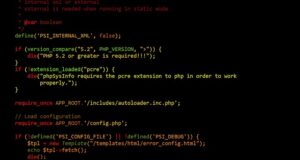Table of Contents
What can React.js do for developers that other tools cannot? How can React.js help organizations to develop better software solutions? What potential advantages does React.js bring for businesses that are in the development space? These are all important questions to consider when trying to better understand the purpose of React.js.
In the world of software development, having a tool that can quickly and efficiently develop useful software solutions is critical for organizations and businesses to stay competitive. React.js is one such tool, with some studies showing that organizations that use React.js are able to produce applications comparatively faster while also having fewer bugs (1)(2). This is because of React.js’s features and benefits, which are especially useful to businesses that need to develop web applications quickly.
In this article, you will learn the fundamentals of React.js, including its purpose, features, and benefits. We will look at how React.js helps developers create better software solutions, how it makes development processes quicker and smoother, and its potential advantages within the development space. We will also examine how React.js can provide stability to the codebase of web applications and benefit businesses in the long run. Finally, we will look at potential challenges that come with using React.js and how to overcome them.
Definitions of React.js
React.js is an open-source JavaScript library for creating user interfaces designed and developed by Facebook. It is used for building dynamic web pages and websites. React allows developers to create large web applications that can change data without reloading the page. React also provides an excellent library of tools for developers to use to create interactive user interfaces.
Components are the building blocks of React.js. These components can be used to build complex applications. Each component is responsible for rendering a specific piece of the application. Components can contain their own data and logic, and can be reused in different parts of the application.
Virtual DOM is an abstraction of the Document Object Model (DOM) in React.js that enables faster updates and improved performance. The virtual DOM is a lightweight copy of the actual DOM that can be changed without affecting the underlying DOM structure. It is able to compare different versions of the virtual DOM, allowing the application to quickly apply changes to the page.
JSX is an extension to JavaScript that is used with React.js. It provides a syntax that combines HTML and JavaScript, allowing developers to write components that are easier to read and maintain.
Props are pieces of data that are passed down to a component from its parent component. Props allow components to communicate and pass data between them.
State is an object that stores a component’s data. It can be used to control a component’s behavior and is passed down from the component’s parent.
Lifecycle methods are functions that are called at different points in a component’s lifecycle. They allow developers to control a component’s behavior throughout its lifetime.
Heading 1: Advantages of React.js
React.js is a popular JavaScript library that is being used to build dynamic user interfaces for web applications. By leveraging its component-based approach, developers can create large web applications that use data and can change over time without reloading the page.
Easier Learning Due to JSX
JSX is used to create React components. It is an XML-like language that can be written in JavaScript. This makes the syntax simpler and easier to understand than other JavaScript frameworks. It also helps developers to learn React faster as well.
Reusable Components
React components are small, self-contained units that can be reused in different parts of an application. This makes React highly scalable and ensures compatibility across different platforms. In addition, it also ensures code reusability, which helps developers save time and costs.
High Performance
React uses a virtual DOM to perform DOM manipulation. This means that DOM manipulation occurs in memory rather than directly on the page. This helps keep web applications more responsive by reducing the amount of re-rendering that needs to occur.
Community Support
React is backed by a strong community of experienced developers that have built a vast library of open source libraries and components. This helps developers find solutions to common problems quickly and efficiently.
One of the advantages of React.js is its flexibility. It can be used in both front-end and back-end development, making it a great choice for quickly developing complex web applications. Furthermore, its component-based approach allows developers to extend the capabilities of their applications without having to re-write existing code. Finally, its virtual DOM lets developers make web applications more responsive, which improves user experience.
React is considered one of the most popular JavaScript libraries due to its many advantages. Some of its features include:
- Easier learning due to JSX
- Reusable components
- High performance
- Strong community support
- Flexible and versatile
Heading 2: Applications of React.js
React.js is a JavaScript library developed by Facebook that helps developers create User Interfaces (UI) with exceptional performance and scalability. It improves the performance of web and mobile applications and provides a better user experience. React is used to build reusable, encapsulated components. It embraces different programming models from traditional imperative programming to functional programming.
Simplify Application Development
React.js simplifies the development of complex web applications by breaking them down into smaller components. This modular approach provides a better structure to the application, making it easier for developers to understand and manage the code. Components are reusable elements that can be used to create larger components, thus avoiding the need for writing more code and allowing developers to work on smaller parts of a larger application.
Enhance Performance
React.js provides developers with improved performance by using a virtual DOM to determine which parts of a web application need to be re-rendered, reducing the number of expensive DOM operations. As the virtual DOM works independently of the DOM, changes can be made without having to reload or refresh the page. This improves the responsiveness of a web application and makes it easier to tweak the application’s features. Additionally, React.js offers developers better debugging tools for tracking errors and other issues with the application.
React.js also makes it easier for developers to maintain and support applications by allowing them to add new features quickly. Developers can bring in 3rd party components to enhance the functionality of their application. This allows developers be more flexible when they want to add new features without having to rewrite the codebase from scratch. This also makes it simple to integrate internal and external libraries into the application.
The popularity of React.js has grown over the years due to its immense advantages over alternative frameworks. With its simple and intuitive syntax, great performance, and scalability, React.js is one of the must-have tools for modern web and mobile application development.
Heading 3: Popularity of React.js
React.js is a popular JavaScript library created by Facebook and used to build interactive user interfaces. It is a declarative, efficient, and flexible open-source library for building user interfaces, driven by an underlying application architecture called Model-View-Controller (MVC).
Advantages of React.js
React.js makes it easier and faster for developers to develop web and mobile applications by providing a well-defined and intuitive JavaScript library. React.js enables developers to quickly create interactive user interfaces for web applications. The library also allows developers to easily integrate with existing code and other frontend libraries. Additionally, React.js provides a comprehensive set of tools that support development from concept to deployment.
Components-based Development
React.js promotes the development of reusable components that can be used in multiple applications. This allows developers to quickly prototype and scale applications with standard components. Furthermore, developers can use these components for a wide range of solutions, making it more cost-effective and efficient to develop and maintain applications.
Performance
React.js can also be used to render data quickly and efficiently. Its JavaScript code is highly performant and is optimized for both the client-side and server-side rendering. Furthermore, React.js utilizes virtual DOMs to minimize the amount of calculations required for efficient performance. This makes React.js the ideal choice for developing large and complex web applications.
Design Principles
In addition to its technical features, React.js also promotes the use of good design practices. The library provides a consistent and simple API for developers to create and maintain code. It also encourages the use of best practices such as automated testing and code reuse, helping developers build maintainable and scalable applications.
Conclusion
Have you ever considered leveraging React.js to maximize your web development productivity? React.js is an efficient JavaScript library that is used to develop dynamic, interactive user interfaces. By utilizing the React.js framework, developers can quickly create dynamic content that looks great and won’t bring browsers to a grinding halt.
If you’re looking to stay up-to-date with the latest React.js advancements and technologies, be sure to follow our blog! We’re always rolling out the newest React.js tutorials, features, and products to ensure that you have the tools you need to stay ahead of the competition. Be sure to stay tuned for our upcoming releases!
Q: What kinds of apps is React.js best suited for?
A: React.js is an ideal technology for building highly interactive user interfaces and web applications. Because of its dynamic capabilities, it’s particularly well suited for creating single page applications (SPAs) and large-scale applications.
Q: How does React.js help with development time?
A: Because React.js allows developers to create dynamic, reusable components, development time is significantly reduced. By leveraging the framework’s virtual DOM, developers can efficiently create and organize code that renders quickly on web browsers.
Q: Is React.js a comprehensive web development tool?
A: While React.js can be leveraged for robust web development projects, it’s not a complete web development tool in and of itself. That said, React.js can work in tandem with other JavaScript libraries and languages to enable web developers to quickly build dynamic user interfaces and complex web applications.
Q: What platforms can React.js be used on?
A: React.js is platform agnostic and can be used on web, mobile, desktop, and server-side applications. It also works with an array of backend technologies, such as Node.js, Java, .NET, PHP, Python, and Ruby.
Q: Is React.js secure?
A: Yes, React.js is highly secure. The framework’s server-side rendering feature helps protect user data by hiding it from the public-facing view layer. Additionally, since changes to individual components happen independently, React.js is able to deter malicious attacks—like cross-site scripting attacks—before they happen.

